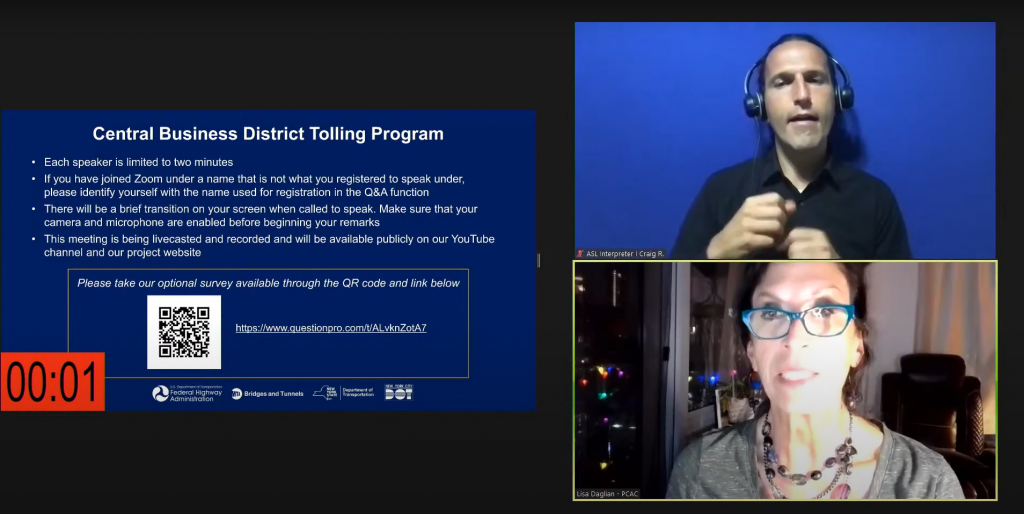Evening, I’m Lisa Daglian, Executive Director of the Permanent Citizens Advisory Committee to the MTA (PCAC). I’m also speaking as someone who lived in Hell’s Kitchen for close to two decades, watching cars and trucks sit in traffic light after light, inching forward, spewing fumes. Buses stuck with them, making it faster to walk. I still spend a lot of time there and crossing the street means cutting through traffic that’s back to pre-pandemic levels. Now I live in Queens – where a lot of that traffic comes from. Watching the increasing number of vehicles drives home the critical importance of congestion pricing.
The primary goal of congestion pricing is to raise $1 billion a year that when bonded will contribute $15 billion toward the MTA’s capital plan. That means the more exemptions, the higher the toll. That’s important to remember as people begin that fight.
The CBD benefits from riders coming from all over the region by train and bus, and the transit system that brings them in would benefit from the tolls that will be charged by congestion pricing. It is the only feasible way to raise significant funds for the MTA without raising fares, bringing in a steady stream of money for key improvements for subways, buses, Staten Island Railway, LIRR and Metro-North.
People who live in the CBD will also benefit from congestion pricing, with as much as 20% less traffic; better air quality; lower traffic noise; and faster travel times, which will also seriously help bus riders.
Congestion pricing funds can and should be used to make the transit system more resilient and protect it against the ravages of climate change. Moreover, thousands of essential projects – and jobs – rely on the money it will bring, including modernizing signals on subway lines and commuter rail; increasing accessibility across the system, including new elevators in 44 more stations; repairing century-old infrastructure; and buying thousands of new buses and train cars.
Constant bumper-to-bumper traffic can be a thing of the past, bringing a better quality of life and faster commutes not just in the CBD, but all over the region. Riders deserve reliable and frequent service. Finally, thanks to congestion pricing, the 21st century transit system our 21st century region desperately needs is in sight.
